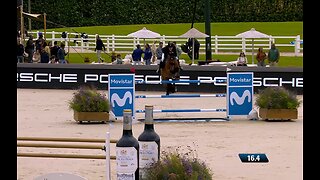Premium Only Content
![Mate (drink) -- Mate or maté[a] (/ˈmæteɪ/) also known as chimarrão or cimarrón,](https://1a-1791.com/video/s8/6/X/F/-/F/XF-Ff.OvCc.jpg)
Mate (drink) -- Mate or maté[a] (/ˈmæteɪ/) also known as chimarrão or cimarrón,
Mate or maté[a] (/ˈmæteɪ/) also known as chimarrão or cimarrón,
Mate was consumed by the Guaraní and Tupí people groups. It has been smashed in South America since before the appearance of Europeans. Its utilization was elite to the locals of Paraguay,[2] all the more explicitly the branches of Amambay and Alto Paraná. A few ethnic gatherings that consumed it are the Avá, the Mbyá and the Kaiowa, and furthermore, less significantly, other ethnic gatherings that completed exchange with them, for example, the ñandevá, the Taluhets (old pampas) and the Qom (Tobas).[citation needed] It is the public drink of Argentina,[3] Paraguay and Uruguay and is likewise drunk in the Bolivian Chaco, Northern and Southern Chile, southern Brazil, Syria (the biggest merchant on the planet) and Lebanon, where it was brought from Paraguay and Argentina by immigrants.[4][5]
Yerba mate (Ilex paraguariensis), ka'a in the Guarani language, contains (among different mixtures) the energizer caffeine. The leaves are dried and hacked or ground to make the coarse fine planning called yerba[c] (signifying 'spice'), which is then absorbed boiling water.
The metal straw is known as a bombilla or bomba and is customarily made of silver. Current straws are normally made of nickel silver, treated steel, or empty stemmed stick. The bombilla capabilities both as a straw and as a strainer. The lowered end is erupted, with little openings or spaces that permit the blended fluid in, however obstruct the stout matter that makes a big deal about the combination. A cutting edge bombilla configuration utilizes a straight cylinder with openings or a spring sleeve to go about as a sieve.[6]
The compartment the mate is served in is otherwise called mate.[d] It is regularly produced using calabash gourd however may likewise be made from different materials.
Today, mate tea is sold economically in tea packs and as packaged chilled tea.
-
 2:04:02
2:04:02
Glenn Greenwald
4 hours agoTrump and Rubio Apply Panama Regime Change Playbook to Venezuela; Michael Tracey is Kicked-Out of Epstein Press Conference; RFK Senate Hearing | SYSTEM UPDATE #508
70.3K64 -
 LIVE
LIVE
Total Horse Channel
5 hours ago2025 CSI3* A Coruña Porsche - Grand Prix
60 watching -
 LIVE
LIVE
megimu32
1 hour agoOTS: Mighty Morphin Power Rangers & the 90s Movie That Defined a Generation
104 watching -
 LIVE
LIVE
Badlands Media
16 hours agoThe SITREP Ep. 128
1,713 watching -
 LIVE
LIVE
BubbaSZN
2 hours ago🔴 LIVE - FORTNITE WITH NEW KEYBOARD
54 watching -
 DVR
DVR
Mally_Mouse
2 hours agoThrowback Thursday! Let's Play: Cuphead
9.91K1 -
 LIVE
LIVE
StevieTLIVE
2 hours agoWarzone HYPE Duos with GloryJean
55 watching -
 1:05:11
1:05:11
Donald Trump Jr.
4 hours agoBuilding the Future with American Bitcoin, Plus Eric's Triggered Debut! | TRIGGERED Ep.272
107K54 -
 LIVE
LIVE
RaikenNight
5 hours agoThe Baldur Boyz are on a Mission to Save the City
15 watching -
 LIVE
LIVE
Misfit Electronic Gaming
5 hours ago"LIVE" "Loan Shark" Demo + Managed Democracy "HellDivers 2" Phasmophobia with LNR + "REPO" W/Crew
27 watching